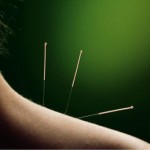Dr. Kien Trinh, Clinical Professor, Michael G. DeGroote of Medicine, McMaster University
Synopsis
Neck pain is one of the three most frequently reported complaints of the musculoskeletal system. Treatments for neck pain are varied, as are the perceptions of benefits. Acupuncture is sometimes used as an alternative to more traditional treatments for musculoskeletal pain. In this review it was defined as the stimulation of one or more specific points on the body, by the insertion of needles, to achieve a desirable effect. Acupuncture typically includes manual stimulation of needles, but there are commonly used variations, such as electrical stimulation or heat stimulation of the needles, which is called moxibustion [the moxa herb, Artemisia vulgaris, is burned at the handle end of the needle]. Injection acupuncture, in which herbal extracts are injected into acupuncture points, is occasionally used as well.
We included 10 trails (661 participants) in this review that examined the effects of acupuncture on neck pain for individuals with chronic neck pain (lasting for at least three months). Acupuncture was compared to sham acupuncture, waiting list, other sham treatments (sham laser, sham TENS) or other treatments (mobilization, massage, traction). Acupuncture treatments appear to be safe and only minor, transient and benign adverse effects were reported in the trials.
The trials were of moderate methodological quality, but the number of participants in each trial was relatively low. There was a range of individuals studied, acupuncture techniques used and outcomes measured, so we could not combine the results of the trials to get an overall picture of the effectiveness of acupuncture. Therefore, we could only draw limited conclusions.
Individuals with chronic neck pain who received acupuncture reported, on average, better pain relief immediately after treatment and in the short-term than those who received sham treatments. Individuals with chronic neck pain with symptoms radiating to the arms who received acupuncture reported, on average, better pain relief in the short-term than those who were on a waiting list.
Abstract
Background
Neck pain is one of the three most frequently reported complaints of the musculoskeletal system. Treatments for neck pain are varied, as are the perceptions of benefits. Acupuncture has been used as an alternative to more traditional treatments for musculoskeletal pain. This review summarizes the most current scientific evidence on the effectiveness of acupuncture for acute, subacute and chronic neck pain.
Objectives
To determine the effects of acupuncture for individuals with neck pain.
Search strategy
We searched CENTRAL (2006, issue 1) and MEDLINE, EMBASE, MANTIS, CINAHL from their beginning to February 2006. We searched reference lists and the acupuncture database TCMLARS in China.
Selection criteria
Any published trial using randomized (RCT) or quasi-randomized (quasi-RCT) assignment to the intervention groups, either in full text or abstract form, were included.
Data collection & analysis
Two reviewers made independent decisions for each step of the review: article inclusion, data abstraction and assessment of trial methodological quality. Study quality was assessed using the Jadad criteria. Consensus was used to resolve disagreements. When clinical heterogeneity was absent, we combined studies using random-effects meta-analysis models.
Main results
We did not find any trials that examined the effects of acupuncture for acute or subacute pain, but we found 10 trials that examined acupuncture treatments for chronic neck pain. Overall, methodological quality had a mean of 2.3/5 on the Jadad Scale.
For chronic mechanical neck disorders, there was moderate evidence that acupuncture was more effective for pain relief than some types of sham controls, measured immediately post-treatment. There was moderate evidence that acupuncture was more effective than inactive, sham treatments measured immediately post-treatment and at short-term follow-up (pooled standardized mean difference (SMD) -0.37, 95% confidence interval (CI) -0.61 to -0.12). There was limited evidence that acupuncture was more effective than massage at short-term follow-up. For chronic neck disorders with radicular symptoms, there was moderate evidence that acupuncture was more effective than a wait-list control at short-term follow-up.
Reviewers’ conclusions
There is moderate evidence that acupuncture relieves pain better than some sham treatments, measured at the end of the treatment. There is moderate evidence that those who received acupuncture reported less pain at short term follow-up than those on a waiting list. There is also moderate evidence that acupuncture is more effective than inactive treatments for relieving pain post-treatment and this is maintained at short-term follow-up.
For a full copy of the article, please contact:
Dr. Kien Vinh Trinh, MD, MSc
Clinical Professor, McMaster University, Faculty of Health Sciences
Programme Chair, Medical Acupuncture,
McMaster University Health Sciences Continuing Education
Director, Ancaster Sports Medicine CentreAncaster Sports Medicine & Rehabilitation Centre
1015 Golf Links Road
Ancaster, Ontario, Canada L9G 4S4
Telephone: 1 (905) 648-4425
Fax: 1 (905) 648-4426
Email: trinhk@mcmaster.ca

